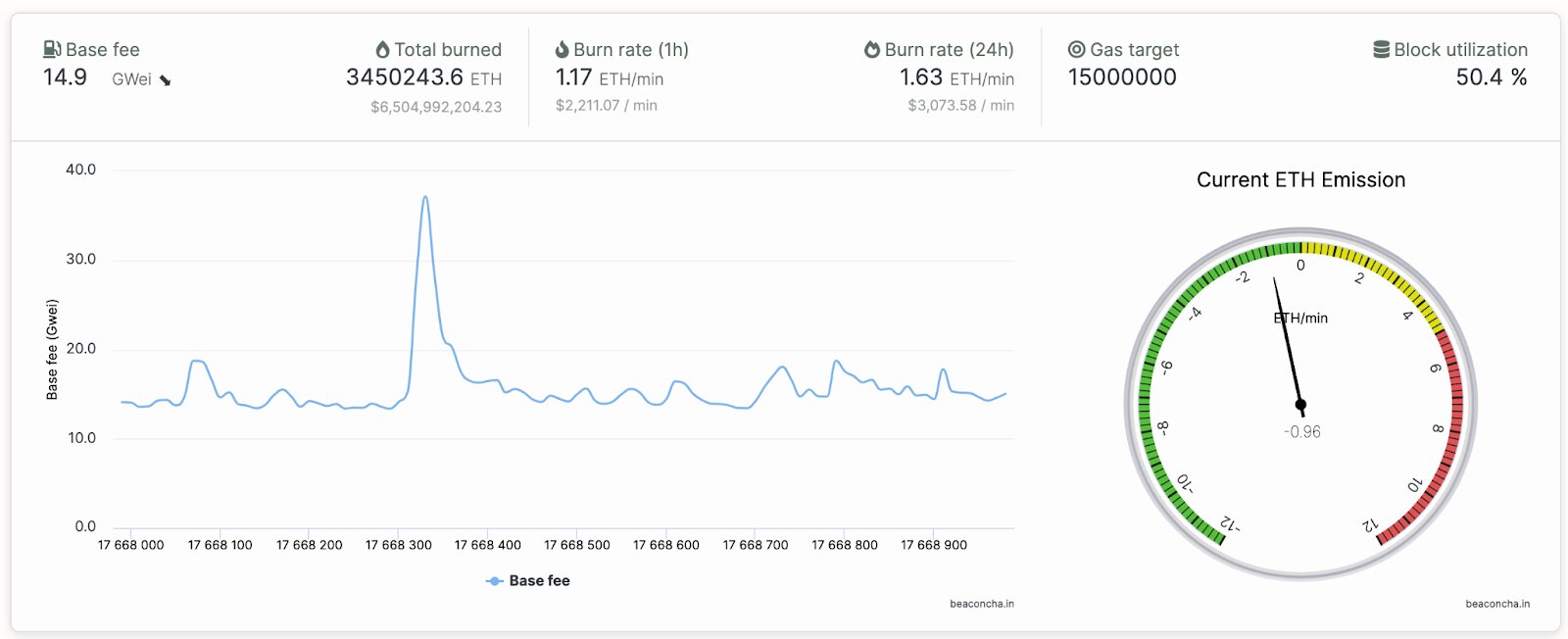Introduction
Welcome to the world of cryptocurrency! Over the past decade, cryptocurrencies have revolutionized the financial landscape, offering a decentralized digital alternative to traditional currencies. If you’ve ever dreamt of creating your own crypto coin, this guide is for you.
Cryptocurrencies, such as Bitcoin and Ethereum, have gained significant popularity and have proven to be more than just a passing fad. With their potential to disrupt industries and empower individuals, the demand for unique and innovative crypto coins has skyrocketed.
Creating a crypto coin involves a combination of technical skills, strategic planning, and understanding the underlying blockchain technology. From designing economic incentives to launching an Initial Coin Offering (ICO) and marketing your coin, there are various key steps involved in the process.
In this comprehensive guide, we will walk you through the step-by-step process of creating your own crypto coin. We will cover everything you need to know, from the basics of cryptocurrencies to the intricate details of designing a blockchain and establishing a network.
By the end of this guide, you will have a solid understanding of the entire process, enabling you to embark on your own cryptocurrency creation journey. So, let’s dive in and explore the exciting world of cryptocurrency creation!
Understanding Cryptocurrency
Before diving into the process of creating your own crypto coin, it’s essential to have a clear understanding of what cryptocurrency is and how it works.
Cryptocurrency is a digital or virtual form of currency that uses cryptography for secure financial transactions. It operates independently of any central authority, such as banks or governments, making it decentralized and resistant to censorship or manipulation.
The foundation of cryptocurrencies lies in blockchain technology. A blockchain is a distributed ledger that records all transactions across a network of computers. Each transaction is verified by the network participants and added to a block, which is then linked to the previous blocks, forming a chain of information.
One of the key features of cryptocurrencies is their security. Transactions made with cryptocurrencies are secured through cryptographic algorithms, ensuring that they are tamper-proof and transparent. This high level of security makes cryptocurrencies an attractive option for conducting financial transactions.
Another significant aspect of cryptocurrencies is their limited supply. Most cryptocurrencies are designed to have a finite number of coins, preventing inflation and providing scarcity value. This feature often contributes to the potential value appreciation of a crypto coin over time.
Cryptocurrencies can also serve as a means of transferring value quickly and globally. Traditional cross-border transactions can be slow and expensive, requiring intermediaries and incurring high fees. Cryptocurrency transactions, on the other hand, can be processed within minutes and with significantly lower fees.
Bitcoin, introduced in 2009, was the first and remains the most well-known cryptocurrency. Since then, thousands of different cryptocurrencies, also known as altcoins, have emerged, each with its own unique features and purposes.
Understanding the basics of cryptocurrency is crucial before embarking on the journey of creating your own crypto coin. Now that we have established a foundation, let’s move on to the planning stage of your crypto coin creation process.
Planning Your Crypto Coin
Creating a successful crypto coin requires careful planning and strategizing. Before diving into the technical aspects, it’s important to define your goals, target audience, and the unique value proposition of your coin.
Start by identifying the problem or need that your crypto coin will solve. Is it aimed at streamlining a specific industry, enhancing privacy and security, or revolutionizing financial transactions? Understanding the purpose of your coin will help you shape its features and functionalities.
Next, consider your target audience. Who will benefit from using your crypto coin? Are you targeting individuals, businesses, or a specific niche market? Understanding your target audience’s needs and pain points will allow you to tailor your coin to their requirements.
One crucial aspect of planning your crypto coin is deciding on the technology and blockchain platform to use. Bitcoin and Ethereum are popular choices, but other platforms offer unique advantages as well. Research and consider factors like scalability, security, and smart contract capabilities when choosing the most suitable platform for your coin.
Another important consideration is the tokenomics of your coin. Tokenomics refers to the economic and incentive structures behind your coin. This includes determining the total supply of coins, the distribution method, and establishing mechanisms for creating value for coin holders.
It’s also vital to have a clear roadmap for the development and launch of your crypto coin. Outline the milestones, timelines, and technical requirements for each stage of the process. This will help you stay organized and focused on achieving your goals.
Furthermore, you should consider the legal and regulatory aspects of creating a crypto coin. Research the regulations in your jurisdiction and seek legal advice if necessary to ensure compliance with the applicable laws.
Remember, planning is the foundation of a successful crypto coin. Take the time to thoroughly analyze and strategize every aspect of your coin before moving on to the technical implementation.
Now that you have a solid plan in place, we can move on to the exciting part – creating the blockchain for your crypto coin.
Creating a Blockchain
Creating a blockchain is a fundamental step in developing your own crypto coin. A blockchain serves as a decentralized ledger that records all transactions and data related to your coin. Here are the key steps involved in creating a blockchain:
1. Determine the type of blockchain: There are two main types of blockchains – public and private. Public blockchains are open to anyone and offer transparency and decentralization. Private blockchains, on the other hand, are restricted to a specific group or organization and prioritize privacy and control. Choose the type of blockchain that aligns with your project’s goals and requirements.
2. Choose a consensus mechanism: Consensus mechanisms ensure that all participants in the network agree on the validity of transactions. Popular consensus mechanisms include Proof of Work (PoW) and Proof of Stake (PoS). PoW requires participants to solve complex mathematical problems to validate transactions, while PoS relies on participants “staking” their coins to validate transactions. Research different consensus mechanisms to determine the most suitable one for your blockchain.
3. Define the block structure: Determine the size and structure of each block in your blockchain. Each block contains a set of transactions, a timestamp, and a unique identifier called a hash. Decide on the size and format of the data that will be included in each block, ensuring efficiency and scalability.
4. Implement the cryptographic algorithms: Cryptographic algorithms are essential for securing the data within your blockchain. Hash functions, digital signatures, and encryption techniques are used to ensure the integrity and privacy of the transactions. Research and implement robust cryptographic algorithms to protect your blockchain data.
5. Set up the network: Establishing the network infrastructure is crucial for the proper functioning of your blockchain. Determine the roles and responsibilities of network participants, set up nodes to store and validate transaction data, and ensure the network connectivity and communication protocols are reliable.
6. Test and deploy the blockchain: Perform thorough testing to ensure the stability and functionality of your blockchain. Identify and fix any bugs or vulnerabilities before deploying it into the production environment. Regularly update and maintain your blockchain to keep it secure and efficient.
Creating a blockchain requires a deep understanding of the underlying technology and careful consideration of various factors. With a well-designed and secure blockchain in place, you are one step closer to launching your own crypto coin.
Next, we will explore the process of building the network to support your newly created blockchain.
Building the Network
Building a robust and reliable network is a crucial step in developing your own crypto coin. The network will support the operations of your blockchain, allowing participants to connect, share data, and validate transactions. Here are the key steps involved in building the network for your crypto coin:
1. Set up nodes: Nodes are the individual computers or servers that participate in the network. They store a copy of the blockchain and communicate with other nodes to ensure the consensus and integrity of the system. Determine the number of nodes needed and their distribution across different geographic locations for improved decentralization and network stability.
2. Establish network communication protocols: Define the protocols that nodes will use to communicate with each other. This can include protocols like TCP/IP or HTTP for data transmission and exchange. Ensure that the protocols are secure, efficient, and compatible with the requirements of your blockchain.
3. Implement peer-to-peer networking: Peer-to-peer (P2P) networking enables direct communication between nodes without the need for intermediaries. It ensures decentralization and allows for efficient data sharing and validation. Implement P2P networking protocols to enable seamless interaction between nodes in your network.
4. Ensure network security: Security is of utmost importance in building the network for your crypto coin. Implement measures like encryption, access control, and firewalls to protect against unauthorized access, data breaches, and network attacks. Regularly monitor and update security protocols to stay ahead of potential threats.
5. Optimize network performance: Network performance is crucial for the smooth operation of your crypto coin. Minimize latency, optimize bandwidth, and implement effective load balancing techniques to ensure fast and reliable data transmission. Regularly monitor network performance and address any bottlenecks or inefficiencies.
6. Test and iteratively improve the network: Thoroughly test your network infrastructure to ensure its stability and reliability. Simulate different scenarios to identify any potential issues and address them promptly. Continuously gather feedback from network participants and iterate on the network design to optimize performance and user experience.
Building a strong network is essential for the success of your crypto coin. A well-designed and secure network will support the efficient operation of your blockchain, enhance decentralization, and provide a seamless experience for users.
Next, let’s delve into the implementation of consensus mechanisms to ensure the agreement and validity of transactions within your network.
Implementing Consensus Mechanisms
Consensus mechanisms play a vital role in ensuring the agreement and validity of transactions within your crypto coin’s network. Consensus mechanisms determine how participants in the network reach consensus on the state of the blockchain. Implementing the right consensus mechanism is crucial for the security, scalability, and efficiency of your crypto coin. Here are some commonly used consensus mechanisms:
1. Proof of Work (PoW): PoW is the most well-known consensus mechanism, used by Bitcoin and numerous other cryptocurrencies. In PoW, participants (miners) solve complex mathematical puzzles to validate transactions and add them to the blockchain. This computational effort guarantees the security of the network, but it requires significant computational power and energy consumption.
2. Proof of Stake (PoS): PoS is an alternative to PoW that offers scalability and energy efficiency. In PoS, participants (validators) are chosen to validate transactions based on the number of coins they hold and are willing to “stake.” Validators are selected randomly, and their likelihood of being chosen is proportional to the number of coins they hold. PoS requires fewer resources compared to PoW but introduces the concept of “stake grinding” and potential centralization of power among participants with a large stake.
3. Delegated Proof of Stake (DPoS): DPoS is a variation of PoS where participants vote to elect a set number of delegates who will validate transactions and produce blocks on their behalf. These delegates take turns producing blocks and are incentivized to act in the best interest of the network. DPoS offers improved scalability and faster block generation compared to PoW and PoS, but it introduces some level of centralization with the election of delegates.
4. Practical Byzantine Fault Tolerance (PBFT): PBFT is a consensus mechanism that focuses on reaching consensus in distributed systems, even in the presence of faulty nodes or malicious behavior. It requires a predetermined set of network participants to reach agreement on the order and validity of transactions through a multi-round voting process. PBFT offers fast transaction confirmation times, but it may not be suitable for large-scale networks due to its computational and communication overhead.
5. Proof of Authority (PoA): PoA is a consensus mechanism where a set of approved validators, often referred to as authorities, are responsible for creating blocks and validating transactions. Validators are selected based on their reputation, expertise, or by being granted authority by a central entity. PoA is useful in private or permissioned blockchains where the trust between participants is established, but it sacrifices decentralization compared to other consensus mechanisms.
The choice of the consensus mechanism for your crypto coin depends on factors such as network scalability, security requirements, energy efficiency, and decentralization goals. Consider the trade-offs between different mechanisms and choose the one that best aligns with your project’s objectives.
Now that we’ve covered consensus mechanisms, let’s move on to designing the economic incentives that drive participation and value within your network.
Designing Economic Incentives
Designing effective economic incentives is crucial for creating a thriving ecosystem around your crypto coin. Economic incentives provide motivation for network participants to engage in desired behaviors, contributing to the growth, security, and stability of your coin. Here are some key considerations when designing economic incentives:
1. Token Distribution: Determine how you will distribute the tokens of your crypto coin. Consider factors such as the total supply of tokens, the allocation to different stakeholders, and any vesting schedules or lock-up periods. Fair and transparent distribution of tokens is essential for building trust and attracting participants to your network.
2. Mining or Staking Rewards: If your crypto coin utilizes a proof-of-work or proof-of-stake mechanism, you can incentivize participants by rewarding them with newly minted coins or transaction fees for their contribution to the network’s security and consensus. Determine the reward structure, including block rewards, transaction fees, and any additional bonuses or incentives for validators or miners.
3. Governance Participation: Encourage active governance participation by offering incentives for network participants to vote on changes, upgrades, or proposals. Rewards can be based on the number of tokens held, voting frequency, or the accuracy of voting decisions. This incentivizes stakeholders to stay engaged and participate in the decision-making process.
4. Token Utility and Ecosystem Integration: Design token utility and integration within your coin’s ecosystem to create demand and value for the token. Determine the use cases for the token, such as paying for goods or services, accessing premium features, or participating in governance. Additionally, explore partnerships and collaborations with other projects or platforms to enhance the usability and desirability of your token.
5. Inflation and Deflation Mechanisms: Consider the long-term supply dynamics of your coin. Determine whether you want to introduce mechanisms to control inflation, such as halving the block rewards over time, or deflation, such as burning a portion of transaction fees. Balance the need to maintain a stable token value while also ensuring sufficient incentives for participants to engage in network activities.
6. Community Engagement and Rewards: Foster community engagement by offering rewards for activities that contribute to the growth of your community. This can include organizing meetups, creating educational content, or referring new users. Incentivize and recognize active community members who go above and beyond to promote and support your coin.
It’s important to strike a balance between providing incentives for network participants and ensuring the long-term sustainability and stability of your coin’s ecosystem. Regularly reassess and fine-tune your economic incentive design based on the evolving needs and dynamics of your network.
Now that we have designed the economic incentives, let’s explore the process of establishing crypto wallets to enable users to securely store and transact with your crypto coin.
Establishing Crypto Wallets
Establishing crypto wallets is a critical aspect of launching your crypto coin. Crypto wallets are software applications or hardware devices that allow users to securely store, manage, and transact with their digital assets. Here’s what you need to know about setting up crypto wallets for your coin:
1. Wallet Types: There are different types of wallets available, each offering varying levels of security and convenience. Software wallets, such as desktop or mobile wallets, are easy to use and accessible, while hardware wallets provide an extra layer of security by storing private keys on a physical device. Consider the needs of your users and the level of security required when choosing wallet types to support.
2. Generating and Managing Keys: Crypto wallets use cryptographic key pairs – public keys and private keys – to authenticate and authorize transactions. Public keys are used to receive funds, while private keys are kept secret and used to sign transactions. Ensure that your wallet supports the generation and management of these keys accurately and securely.
3. Security Measures: Security is paramount when it comes to crypto wallets. Implement robust security measures, such as encryption, password protection, and two-factor authentication, to safeguard users’ funds and information. Regularly update the wallet software to patch any vulnerabilities and stay ahead of potential threats.
4. User-Friendly Interface: Design the wallet interface to be intuitive and user-friendly, making it easy for users to navigate and interact with their funds. Provide clear instructions and guidance on how to perform transactions, check balances, and access additional features. Consider incorporating features like transaction history and ability to set custom transaction fees to enhance user experience.
5. Multi-Currency Support: If your crypto coin aims to support multiple cryptocurrencies, consider building a wallet that allows users to manage and transact with different digital assets within a single interface. This provides convenience and simplifies the user experience, especially for users who hold various cryptocurrencies.
6. Mobile and Web Compatibility: With the increasing use of mobile devices, it’s essential to provide mobile wallet compatibility. Develop mobile wallet apps for iOS and Android platforms, ensuring seamless integration and easy access to funds on the go. Additionally, consider providing a web-based wallet option for users who prefer to manage their assets through a web browser.
7. Integration with Exchanges: Facilitate the seamless transfer of funds by integrating your wallet with reputable cryptocurrency exchanges. This allows users to easily buy, sell, and exchange your crypto coin using the wallet interface, enhancing liquidity and accessibility.
Remember to thoroughly test your wallet software, conduct security audits, and seek feedback from users during the development and deployment stages. Regularly update and improve your wallets to enhance security, performance, and user experience.
Now that you have established crypto wallets to support your users, it’s time to consider launching an Initial Coin Offering (ICO) to raise funds for your project.
Launching Initial Coin Offering (ICO)
Launching an Initial Coin Offering (ICO) is an essential step in raising funds for your crypto coin project. An ICO allows you to offer your tokens to investors and early adopters in exchange for funding. Here’s a guide on how to successfully launch an ICO:
1. Create a Solid Whitepaper: A whitepaper is a detailed document that outlines the technical and conceptual aspects of your project. It explains the problem you aim to solve, the unique features of your coin, and the roadmap for development. Make sure your whitepaper is well-written, transparent, and provides potential investors with a clear understanding of your vision and project’s potential.
2. Define Token Metrics and Distribution: Determine the total supply of tokens and the allocation for the ICO. Set the token price and establish a strategy for the sale, such as early-bird discounts or bonus periods. Clearly communicate the token distribution plan to instill confidence in investors and ensure a fair and transparent process.
3. Build a Strong Community: Creating a vibrant and engaged community around your project is vital for a successful ICO. Engage with potential investors through social media, forums, and events. Provide regular updates on the project’s progress, answer questions, and address concerns. Building trust and credibility within the community is crucial in attracting and retaining investors.
4. Smart Contract Development: Develop a smart contract on your chosen blockchain platform to govern the issuance and distribution of your tokens. The smart contract ensures transparency and automates the token sale process, thereby instilling trust and removing the need for intermediaries.
5. Pre-ICO Marketing: Generate awareness and attract early investors through targeted marketing efforts. Utilize various channels such as social media, content marketing, paid advertising, and influencer partnerships to spread the word about your ICO. Highlight the benefits and potential of your project to attract potential investors.
6. ICO Launch and Token Sale: Launch your ICO by opening the public token sale. Implement security measures to protect against potential attacks or fraud. Ensure that the token sale process is user-friendly, secure, and can handle the anticipated transaction volume. Provide clear instructions on how to participate in the ICO, including wallet setup and contribution procedures.
7. Post-ICO Management: After the ICO concludes, allocate resources to manage investor relations, legal compliance, and token distribution. Uphold transparent communication and regularly update investors on the progress of your project. Ensure compliance with relevant regulations and seek legal advice if necessary.
Launching an ICO requires careful planning, effective marketing, and building a strong community. By following these steps, you can successfully raise funds and build momentum for your crypto coin project.
Now that the ICO is complete, let’s shift our focus to the crucial aspect of ensuring the security of your coin.
Security Considerations
Ensuring the security of your crypto coin is of utmost importance. The decentralized nature of cryptocurrencies makes them attractive targets for hackers and malicious actors. Here are some key security considerations to keep in mind:
1. Secure Development Practices: Follow secure coding practices when developing your crypto coin. Conduct regular code reviews, vulnerability assessments, and penetration testing to identify and address any weaknesses or potential entry points for attackers. Implement security best practices such as input validation, secure key management, and protection against common attack vectors like SQL injection and cross-site scripting (XSS).
2. Secure Network Infrastructure: Secure the infrastructure supporting your crypto coin’s network. Utilize firewalls, intrusion detection systems, and other security measures to protect against unauthorized access. Regularly update software and apply security patches to address known vulnerabilities.
3. Wallet Security: Provide clear instructions to users on how to securely store and manage their wallets. Encourage users to use hardware wallets or wallets with strong encryption and multi-factor authentication. Educate users about the risks of phishing attempts and encourage them to only download wallet software from trusted sources.
4. Smart Contract Audits: If your crypto coin utilizes smart contracts, ensure that they undergo thorough audits by security experts. Smart contract vulnerabilities can lead to significant losses, so it’s crucial to identify and fix any potential issues before deploying them to the blockchain.
5. Regular Security Audits: Regularly conduct security audits of your entire ecosystem, including the blockchain platform, wallets, and any other software components. Engage external security firms to assess the overall security posture of your system and provide recommendations for improvement.
6. Educate and Empower Users: Security is a shared responsibility. Educate your users about common security threats, such as phishing attempts, malware, and social engineering. Provide resources and guidance on how to secure their accounts, protect their private keys, and avoid falling victim to scams.
7. Incident Response and Recovery Plans: Develop an incident response plan that outlines steps to be taken in the event of a security breach or compromise. This plan should include procedures for isolating affected systems, notifying users, and recovering from the incident. Regularly test and refine your incident response plans to ensure readiness.
Remember, security should be an ongoing effort. Stay informed about the latest security practices, keep track of emerging threats, and adapt your security measures accordingly. By implementing robust security measures, you can protect your crypto coin and provide users with a secure and trustworthy platform.
Next, let’s explore the important aspect of marketing your crypto coin to gain traction and visibility in the market.
Marketing Your Crypto Coin
Marketing plays a vital role in creating awareness, gaining traction, and establishing a strong presence for your crypto coin. Here are some key strategies to effectively market your crypto coin:
1. Develop a Brand Identity: Create a compelling brand identity for your crypto coin. This includes designing a unique logo, selecting a memorable name, and crafting a compelling mission and vision statement. A strong brand identity helps differentiate your coin from the competition and creates a strong visual association for potential investors and users.
2. Content Marketing: Leverage content marketing to educate and engage your target audience. Create high-quality content that explains the benefits, features, and potential use cases of your crypto coin. Publish blog posts, articles, and tutorials that provide valuable insights and establish your expertise in the field. Engage with your audience through social media platforms, forums, and community channels to share valuable content and answer questions.
3. Social Media Presence: Establish a strong presence on social media platforms that cater to the crypto community. Engage with potential users and investors through informative posts, updates about your project’s progress, and timely responses to inquiries. Leverage social media influencers and thought leaders in the crypto space to amplify your reach and credibility.
4. Community Engagement: Foster an active and supportive community around your crypto coin. Encourage community members to share their experiences, provide feedback, and contribute to the growth of the project. Organize community events, webinars, and online meetups to bring users and supporters together. Reward active community members with incentives and recognition to enhance engagement and loyalty.
5. Partnerships and Collaborations: Seek strategic partnerships with other projects, platforms, or influencers to expand your reach and tap into new user bases. Collaborate with established organizations or exchanges to integrate your coin into their platforms or services. Joint marketing efforts and cross-promotion can significantly increase your visibility and credibility.
6. Influencer Marketing: Collaborate with influential individuals or content creators in the crypto space to promote your coin. Engage with crypto influencers who have a loyal and engaged following, ensuring that their values align with your project. They can help generate buzz, increase awareness, and drive users to your platform.
7. Press Releases and Public Relations: Issue press releases to announce major milestones, partnerships, or platform updates. Connect with relevant media outlets and journalists to secure interviews, articles, or features about your crypto coin. Engage with the crypto press and industry influencers to share updates and build credibility through third-party endorsements.
Remember to comply with relevant regulations and seek legal advice when planning and executing marketing strategies. Maintain transparency, provide clear and accurate information, and be responsive to concerns or inquiries from potential users and investors.
Marketing your crypto coin requires consistent effort, creativity, and engagement with the community. By implementing effective marketing strategies, you can create a buzz around your coin, attract users, and establish a strong presence in the competitive cryptocurrency market.
Now that we’ve explored various marketing strategies, let’s summarize what we’ve covered in this guide and wrap up our discussion.
Conclusion
Congratulations! You have now gained a comprehensive understanding of the process of creating and launching your own crypto coin. From understanding the basics of cryptocurrency to planning, developing, and marketing your coin, we have covered various crucial aspects of this exciting journey.
Creating a crypto coin involves careful planning, technical implementation, and strategic marketing. It is essential to define your goals, target audience, and unique value proposition. Building a secure and efficient blockchain, establishing a strong network, and implementing the right consensus mechanism are crucial for the success of your project.
Designing economic incentives, setting up secure crypto wallets, and launching an ICO are all steps that require attention and careful execution. Marketing your crypto coin is essential to gain traction, establish a community, and create awareness in the competitive crypto landscape.
Throughout this guide, we have emphasized the importance of security. Securing your code, network infrastructure, wallets, and smart contracts is crucial to protect your users’ funds and information. Regular audits and staying updated on the latest security practices are invaluable for maintaining the trust of your community.
Remember that the cryptocurrency world is dynamic, and continuous learning and adaptability are key. Stay informed about emerging trends, regulations, and technological advancements in the crypto space. Regularly engage with your community, seek feedback, and iterate on your project to ensure its growth and success.
Creating a crypto coin is an exciting and challenging endeavor. By following the steps outlined in this guide, you are well-equipped to embark on your journey and bring your vision to life. Good luck, and may your crypto coin flourish in the ever-evolving world of cryptocurrencies!

























